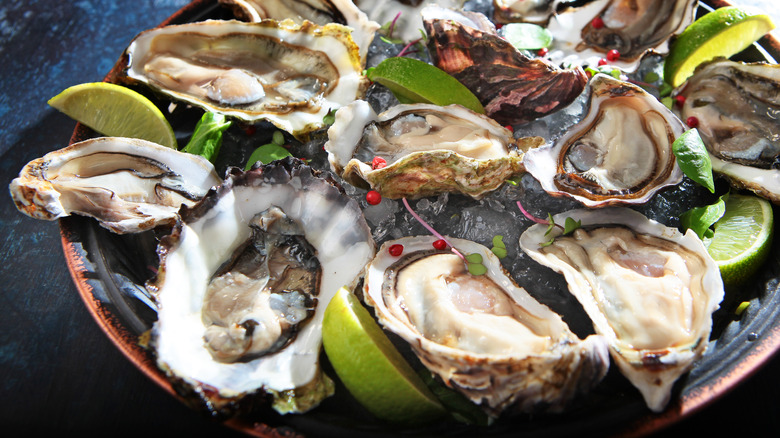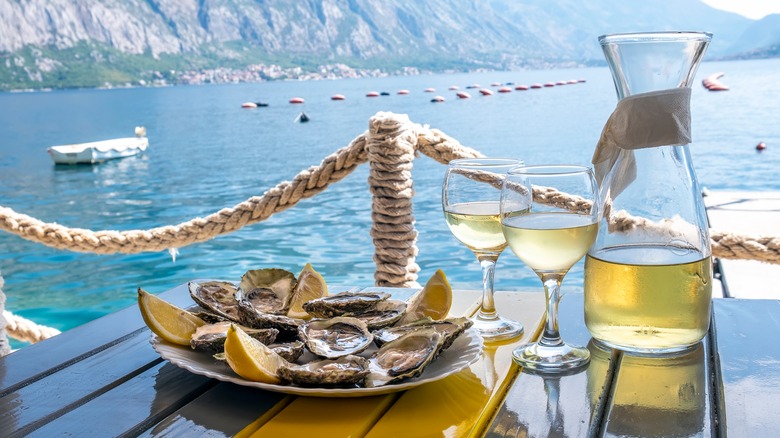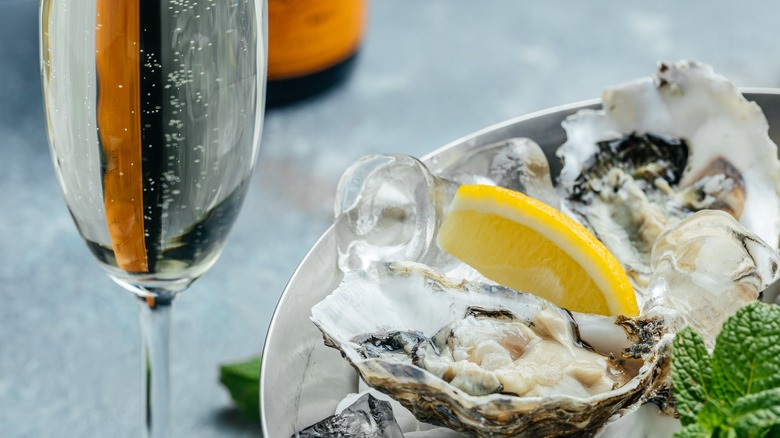The Flavor Difference Between Pacific And Atlantic Oysters
Oysters are a popular type of seafood found in various locations worldwide, including both the Pacific and Atlantic oceans. They are great as standalone dishes, such as Oysters Rockefeller, and they mix well with multiple seafood recipes, like seafood pasta or a rich Creole Gumbo. According to Fulton Fish Market, the water in which oysters are grown plays a considerable role in their taste because oysters absorb the water around them. The different minerals, nutrients, and microorganisms from the water where they live give the oysters their unique flavors.
While all oysters have about the same texture, a somewhat similar appearance, and nutritional content, they can have very different and distinct flavors, according to Michelin Guide. This can impact the recipe of a dish you are making if you don't use the correct type of oyster, so it's essential to understand the difference in flavors between Atlantic and Pacific oysters.
Atlantic versus Pacific oysters
Per Insider, Atlantic oysters are known for their savory, very salty taste, are typically larger than Pacific oysters, and have a teardrop-shaped shell. This makes them great for scalloped oysters and similar dishes. Naples.gov says that Atlantic oysters are found throughout the Atlantic Ocean and the Gulf of Mexico, with a habitat that ranges from there to Canada. Pacific oysters are typically smaller than Atlantic oysters and have a more rigid, elongated shell.
According to the Australian Academy of Science, Pacific oysters are native to Japan and are the most commercially farmed. They are found in various regions, and there are several types of Pacific oysters. However, Michelin Guide says that the variety known as the Pacific Oyster is the most commonly found. Per Fulton Fish Market, Pacific oysters often taste slightly sweeter than their Atlantic counterparts. They also have a stronger, more pronounced minerality (or ocean-like flavor) due to the colder waters in which they are found.
Pacific oyster varieties
Of course, there are many types of Pacific oysters. One version is the Sydney Rock oyster, which the Sydney Oyster Girls says is almost flat, with a rich, creamy, and mineral flavor. Then there's the Angasi oyster, which ABC News says is close to extinction. They have a full-bodied taste with a mineral-like aftertaste. According to Michelin Guide, the Belon oyster has a strong seaweed flavor with hazelnut notes. This makes them great for dishes like Oyster Pie.
By some, the larger Gillardeau oyster is referred to as the Rolls Royce of oysters, and its size and texture make it a favorite in seafood restaurants, according to Royale Gourmet. The Fine de Claire oyster poses a rich and balanced flavor, with less flesh, per Jagota. And finally, Michelin Guide says that Kumamoto oysters have a mild, briny, slightly sweet profile.
All types of oysters can be enjoyed raw on the half-shell, but the difference in flavors causes some people to prefer the taste of one version over the other. Those who love oysters really love them, and there are so many to try that even the most timid taste testers are likely to find one they enjoy.


